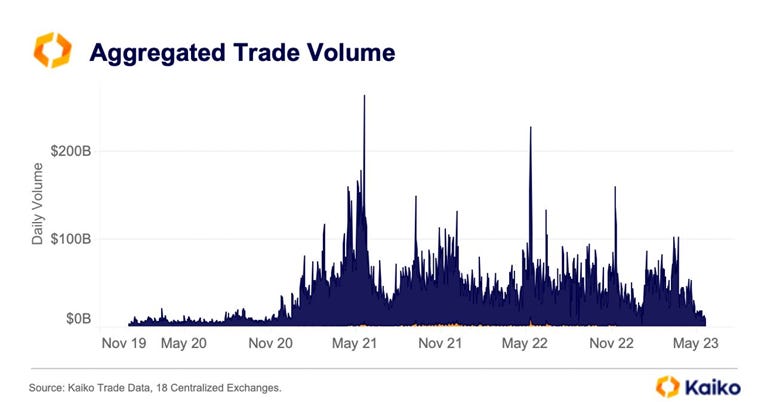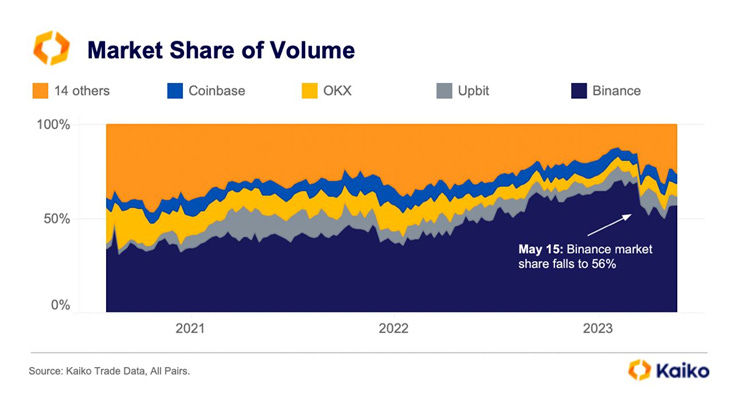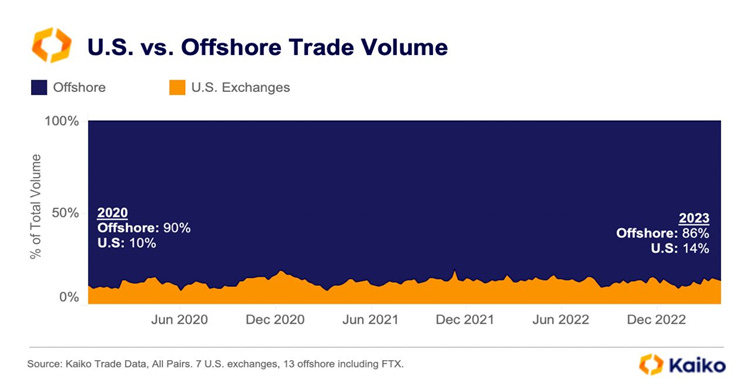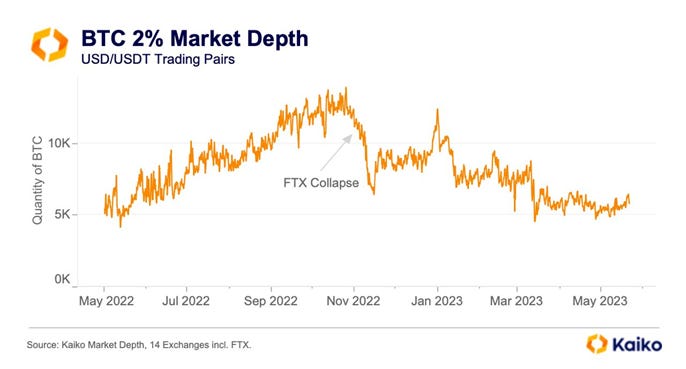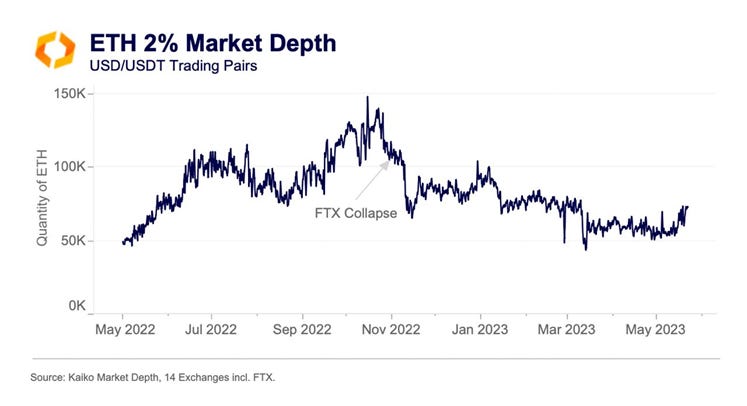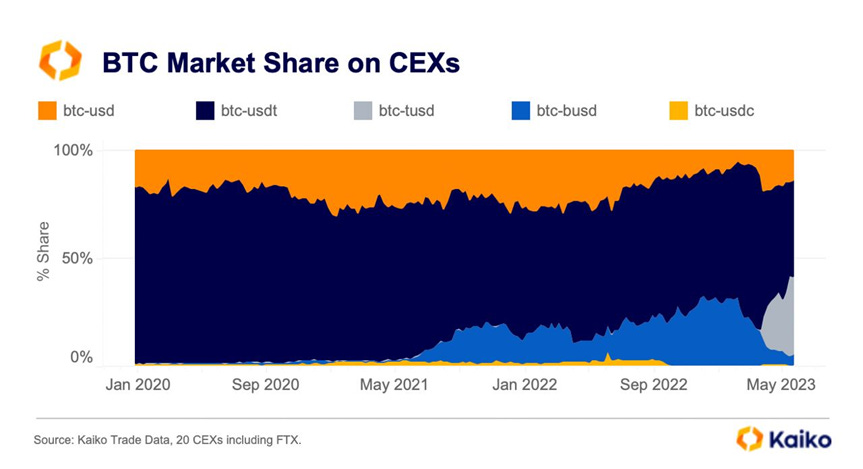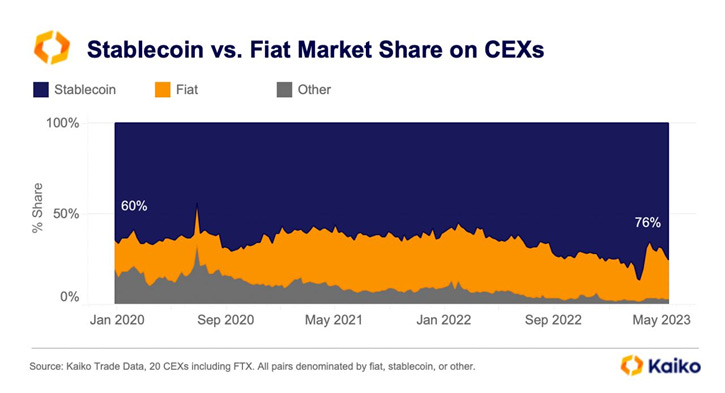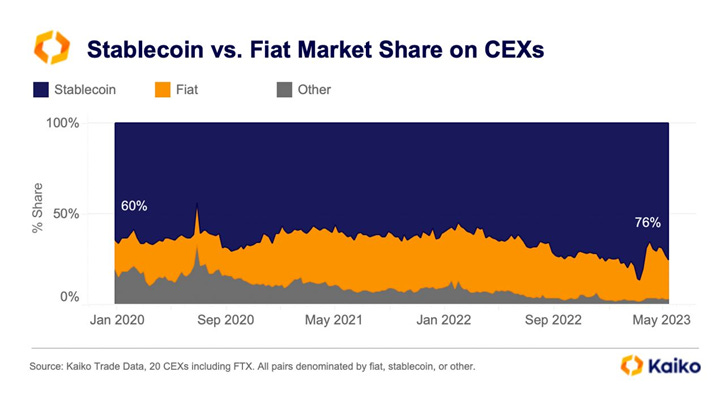|
To investors,
Today is a guest post from Will Clemente, co-founder of Reflexivity Research, on the current state of crypto market structure. You can subscribe to Reflexivity’s research by clicking here.
After a major first quarter we have seen a continued decline in trading volume across the board for major digital assets across all major centralized exchanges. Throughout the month of May, aggregated trading volumes declined from $23bn to $9bn to their lowest levels since 2020. This represents continued apathy and decline in speculative interest in crypto markets.
Looking at the makeup of overall trading volume by exchange, Binance’s market share has fallen to 56% despite a slight rebound over the last week. This is a 15% percent decline from its peak at the start of 2023. The biggest beneficiaries of this dynamic fall under the “other” category, which includes exchanges such as Huobi, Kraken, and Kucoin.
Offshore exchanges remain the dominant venues across the entire crypto landscape, making up a whopping 86% of all trading volume; this dynamic is likely to only accelerate with regulatory uncertainty in the United States. Even Coinbase, which historically has been recognized as the publicly traded highly regulatory compliant alternative option to other venues in crypto, announced the launch of its own offshore derivatives venue called Coinbase international exchange.
Harsh regulatory efforts and posturing from government officials in the US with the intention of establishing control over the industry are only going to have the opposite effect and drive talent/capital/innovation off-shore and on-chain; ultimately giving the government less control than what it would have if it encouraged activity to take place in the US; allowing it to at least retain some degree of oversight. For the foreseeable future it’s unclear why the dominance of trading volume in offshore venues won’t continue.
While USD denominated market depth has remained relatively stable, liquidity for both Bitcoin and Ethereum measured by coin denominated 2% market depth (coin denominated depth of bids and asks within 2% of current trading price) has remains roughly flat on the month; again, illustrating a period of apathy for the crypto market. This downtrend in liquidity that we’ve been tracking for the last few months was reflected in an announcement from Jane Street and Jump, in a statement from the two market makers, that they would be scaling back their crypto operations in the US.
Jane Street went a step further stating that the firm would be scaling back its crypto operations globally due to regulatory uncertainty that has made it difficult for the firm to operate in a compliant fashion. This decline in liquidity makes it more difficult more entities operating in digital asset markets to execute larger trades without incurring slippage (price impact). In other words, declining liquidity in the market translates to higher volatility.
In terms of trading pairs, TUSD has taken up an increasing amount of activity on centralized exchange, now 36% percent of all Bitcoin trading volume while Binance and Paxos’ BUSD pair has declined from 32% to 5% amidst regulatory uncertainty and the removal of zero-fee trading.
Stablecoins remain the dominant pair of choice for centralized exchange market participants, with stablecoins making up 82% percent of overall trading volumes, relative to fiat, for Bitcoin specifically and 76% percent of centralized exchange crypto trading volumes overall.
Of these stablecoins, Tether remains king with a whopping 76% of overall stablecoin market share on centralized exchanges.
That is it for today’s analysis. Hope everyone has a great day.
This wasa guest post from Will Clemente, co-founder of Reflexivity Research, on the current state of crypto market structure. You can subscribe to Reflexivity’s research by clicking here.
-Pomp

